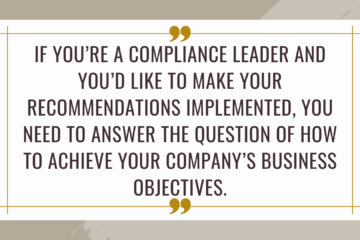Startup Decision-Making: Urgency Versus Long-Term Vision
I am now obsessed with Ben Horowitz and his management principles.
If you don’t know him, Ben Horowitz is a co-founder of the venture capital firm A16Z and the author of “The Hard Thing About Hard Things: Building a Business When There Are No Easy Answers“. He introduces the idea of the “peacetime CEO” versus the “wartime CEO” and I personally find that it is very much applicable to any leadership position. The reason why this is so important and useful is that sometimes department heads artificially and unnecessarily create a sense of urgency and panic and deploy wartime decision-making style when it is not necessary, and sometimes the situation is dire and critical and more short-term thinking would be beneficial, but people continue setting up big audacious goals and talk about company culture…
Seriously, this theory opened my eyes!
The terms “wartime CEO” and “peacetime CEO” describe the different leadership styles and approaches that are required in distinct phases of a company’s lifecycle.
Wartime CEO operates in times of crisis, intense competition, or when the company faces existential threats. They
- prioritize immediate survival and are focused on navigating chaos, uncertainty, and high-stakes situations.
- emphasize urgency, quick decision-making, and rapid adaptation to changing circumstances.
- often have to make tough decisions such as layoffs, cost-cutting, and restructuring and communicate with a sense of urgency (like there is no tomorrow), and tend to be more authoritarian, and less consensus-oriented.
Peacetime CEO operates in more stable, less turbulent periods where the company’s main challenge is growth and scaling. They:
- focus on long-term strategic planning, growth strategies, and operational efficiency.
- prioritize building and scaling the company, expanding market share, and maintaining and improving existing systems and processes, often applying iterative tactics
- that emphasize stability, organizational structure, sustainable growth, long-term planning, innovation, and company culture.
Horowitz’s idea is that all leaders have an instinctive preference for one style and find it difficult to adapt and switch to the opposite style, which obviously creates a problem for the company.
Sometimes, I see how certain compliance leaders try to artificially create a sense of emergency, amplify the risks, and force a particular decision using wartime methods (aka “we have to urgently invest into this audit remediation plan, otherwise, we will all be in jail”), and it never is a good idea, in my opinion. When the situation is not really critical and the survival of the company is not really imminent, it is better to go through the process of making logical and rational decisions rather than creating a sense of panic and acting out of fear. Certain (unwise) leaders may deliberately increase the atmosphere of panic, fear, and drama because they (incorrectly) believe that people will work harder when they are scared.
At the same time, I have seen a few founders who ignored early signs of problems, continued aggressive marketing, and continued over-investing into ambitious multi-country expansion plans, hoping to avoid cost-cutting and killing their favorite projects, hoping that investors would turn around and provide additional financing. When the company environment is very consensus-oriented and the founder is very visionary and future-focused, people don’t want to look pessimistic and hesitate to call out the naked emperor.
My natural instincts are clearly in favor of the wartime leadership, I tend to be near-term and single-issue focused and prefer pragmatic and authoritarian decision-making. I rarely get inspired by the 5-year vision and slow and steady progress often feels to me a bit boring. At the same time, I really love working with very positive, aspirational, and visionary founders.
What has been your experience with peacetime versus wartime leadership styles? Do you feel you personally have a preference?
Make sure to have a wonderful day today!
Start listening to this episode on the Compliance That Makes Sense podcast – Click here!
P.S. I am happy to announce that the “FinTech Startup Compliance Pro” Certification received its formal accreditation and the next cohort of students will start in a few weeks! This Certification was formally accredited by the Continuous Professional Development agency as a program that meets the requirements of this leading international institution responsible for assessing and certifying professional educational programs. The goal of this program is to transfer the focus of the compliance professionals from being primarily information providers recommending decisions into pragmatic results-focused executives able to set up and manage compliance as a revenue-generating function. You will be trained on how to set and manage any and all aspects of FinTech compliance, including:
- Organizational structure. Hiring and firing principles.
- Setting Revenue-generating objectives for the next year.
- Making ROI-based resource needs estimates.
- Defining KPIs for all key compliance areas: new products, AML, risk management, reporting, outsourcing, funds safeguarding, and governance.






